- How to Propagate Monstera Guide: The Three Ways to Succeed - September 17, 2021
- Escargot Begonia: Why Is The Rex Begonia So Rare? - August 31, 2021
- Rieger Begonia: When You Can Expect The Hiemalis Begonia To Flourish - August 31, 2021
As one of the most strikingly beautiful Peperomia varieties, you are sure to want one to round out your plant collection. While this variety is beautiful and unique-looking when compared to other Peperomia plants, it still maintains the distinctly easygoing and unfussy care and maintenance requirements that its plant family is known for.
How to Identify Rainbow Peperomia (Peperomia Ginny)
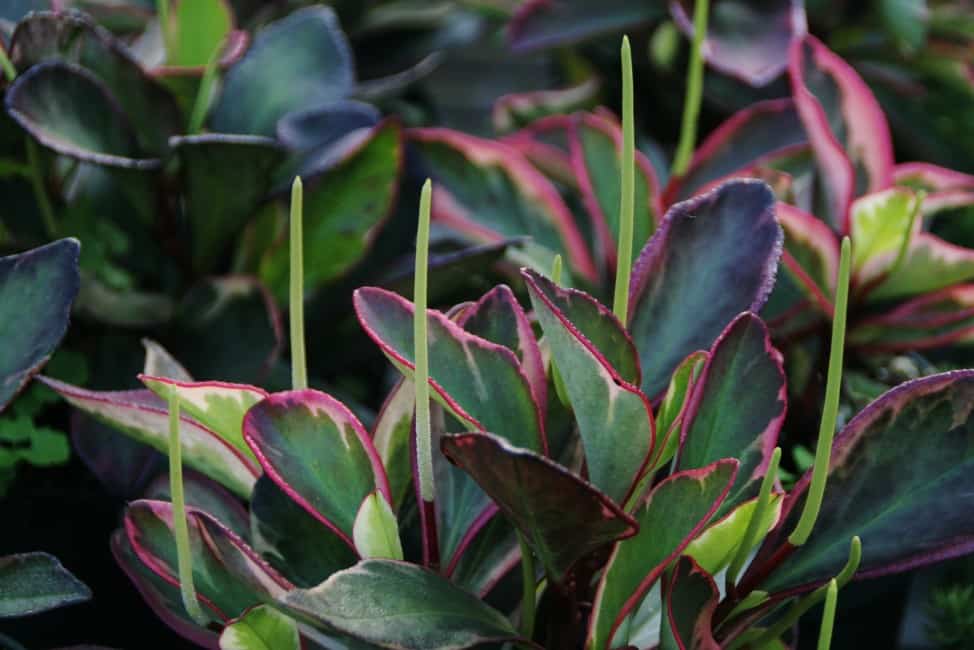
The features of this plant are going to send your mind into imagining a Pink Princess Philodendron; after all, they have a similar color palette. Identifying a Rainbow Peperomia is quite easy, just look for the following key features:
- Large, stiff, and oblong shaped leaves
- Leaves that are colored in green, white, and pink
- Flowers that form on top of long spikes
- Stems that are stiff and red in color
- A plant with a strong aroma
How to Grow Rainbow Peperomia from Seeds
If you are willing to spend a lot of time waiting for significant signs of growth, then growing a Peperomia plant from seed will be a fun project for you. If this is the method you have chosen for your garden, follow these steps:
- Purchase seeds from a reputable seller (sellers who price their seeds between $1 and $2)
- Fill a container with a soilless seed starting mix
- Plant the seeds in the seed starting mix
- Water the mix so that it is moist but not soggy
- Place plastic wrap over the top of the container
- Set the container in a warm spot that gets plenty of bright, indirect sunlight
- Once sprouts appear, transplant the seeds to a container filled with soil that has a pH level between 6.1 to 7.8
How to Propagate Rainbow Peperomia
If you would like a new Rainbow Peperomia plant in a shorter amount of time, then you might opt for a different propagation method than planting seeds. The leaf-cutting method is a simple and straightforward process that can be done during spring pruning sessions or whenever you feel that it’s time for your plant to be repotted.
The Leaf Cutting Method:
- Clean a pair of scissors or another type of cutting utensil
- Cut off a healthy leaf that includes a petiole
- Fill a plant container with well-draining soil that includes 50% peat and 50% perlite
- Dip the end of the leaf in a rooting hormone
- Stick the leaf into the soil
- Set the plant container in an area that is warm and receives plenty of indirect or filtered sunlight
- Water the new plant when the top layer of its soil is dry
Rainbow Peperomia Growing Conditions
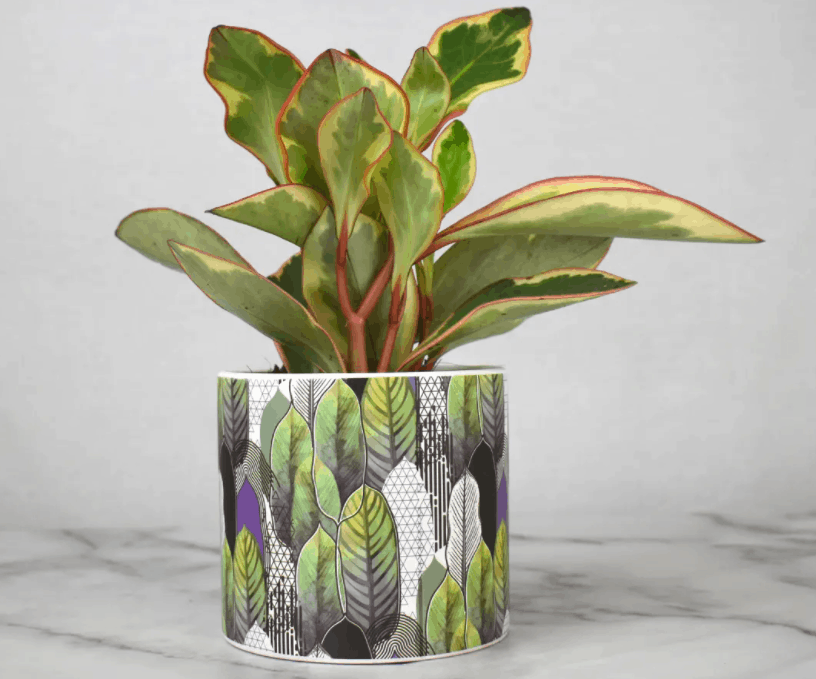
Ideally, this is a tropical plant should be kept in a spot that is away from vents and doors and has temperatures ranging between 68 and 78 degrees Fahrenheit. To provide this sort of heat without overheating your home, you can set this plant on a Plant Heat Mat.
Another factor to keep in mind when determining how to care for and where to set your Rainbow Peperomia plant is humidity. While this plant does like high humidity levels, it can survive in regular household humidity as long as it gets some moisture on extra dry summer days.
A Pebble tray or a Plant humidifier can be used so that your plant is healthy and your family is not overly hot and sticky.
How to Plant Rainbow Peperomia
This Peperomia variety should not need to be replanted very often because repotting can cause it stress and the plant does not mind being tight and cozy in its plant container. You should plan to repot your Rainbow Peperomia every two to three years and only in the springtime. Repotting it will provide it with new soil that contains fresh nutrients and this process will help keep the pot clean so that the risk of pest infestations and diseases is reduced.
Keep an eye out for the following signs to know whether or not your plant needs repotted before two to three years has passed:
- Compacted Soil
- Roots that are crowded and growing into a ball formation
- A plant that looks too big for its current container
When it comes time to repot your Rainbow Peperomia, follow these steps:
- Fill a container with potting soil (if the plant has outgrown its current container, choose a new container that is two inches larger in diameter)
- Create a hole in the soil for the plant to set inside
- Carefully remove the plant from its current container
- Gently dust off any excess soil from its roots
- Set the plant into the hole in the new container
- Spread the soil around so that the plant is secure in its new container
- Water the plant
- Set it in a warm spot with indirect sunlight
Rainbow Peperomia Potting & Soil
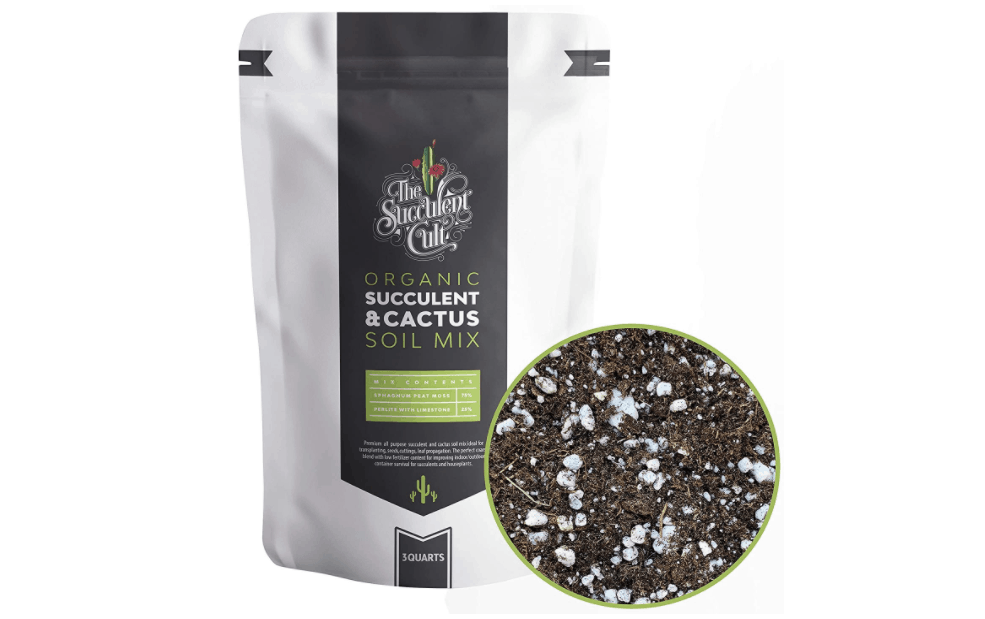
The key to proper soil and the proper container is to choose something that is capable of draining off excess water. Proper soil and a proper container are key to a healthy plant. A proper container filled with the proper type of soil can reduce the chance of root rot, pest infestations, and other diseases plants face.
Try these recommended products for your Rainbow Peperomia:
- The Succulent Cult’s Organic Succulent & Cactus Soil Mix
- Le Tauci Plant Pots with Drainage Holes
Rainbow Peperomia Water Requirements
This plant variety is highly susceptible to root rot from overly saturated soil, so it is best to learn how to properly water it, or providing it with the proper soil and plant container will be pointless. Peperomia plants should be watered using the soak and dry method. It is a very simple method with six steps:
- Test the plant’s soil before watering it. It should only be watered if the soil is completely dry. If it is still moist, wait another day to water it.
- Fill a tray or a tub with water.
- Set the plant container in the water, but make sure the water isn’t so deep that it will overflow the lip of the container. The point of the soak and dry method is to utilize the drainage holes in the plant container to soak up water from the bottom.
- Let the plant soak up water for fifteen minutes.
- Remove the plant from the water.
- Set the plant in a spot where the excess water can drain from the container’s drainage holes.
Don’t worry if you are still a little hesitant about watering your plants. Plant watering apps are capable of reducing or removing any worries you may have about watering your plants. They are designed to keep track of when you watered your plants, to remind you to water your plants, and to answer questions about your plants. Water without worry.
Rainbow Peperomia Light Requirements
Lighting is a very important factor for Rainbow Peperomia. If you want to successfully grow this plant with all its color variegations and large delicate leaves, then provide it with bright or low light that is either filtered or shaded.
If you have some hesitancies about the amount of lighting you are providing your Rainbow Peperomia, test your indoor spaces with either a light meter or a light meter app. These technologies will ensure that your plants are receiving adequate lighting.
Best Rainbow Peperomia Fertilizer
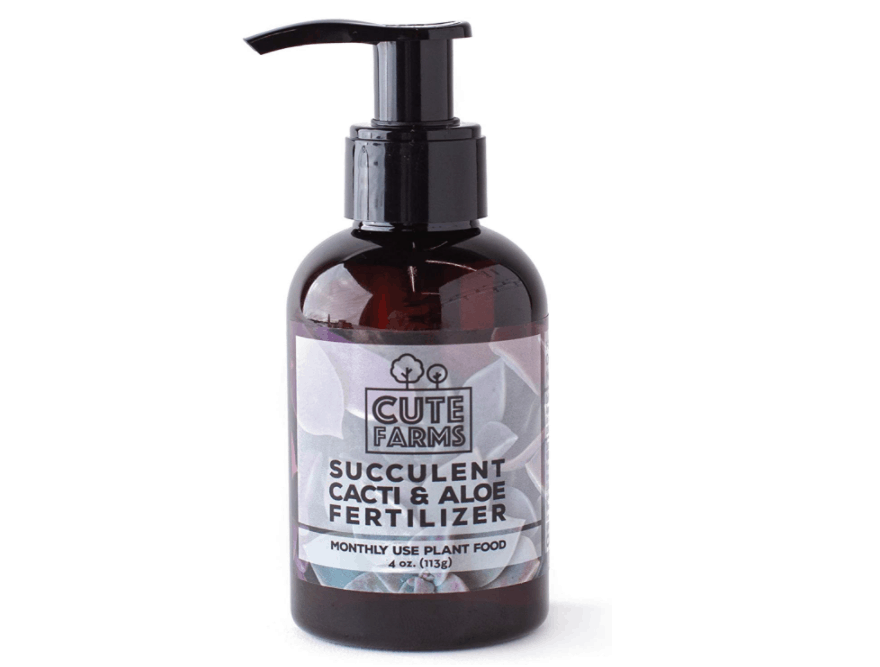
Rainbow Peperomia does not need to be fertilized very much or very often, you should only plan to feed it a 50% dosage either during spring and summer. Spread out these feedings every 2 to 4 weeks during this time frame.
Try Cute Farms Succulent Cacti & Aloe Fertilizer for this plant.
Best Rainbow Peperomia Companion Plantings
Setting plants together is a great way to decorate and provide an area that is aesthetically pleasing, and typically, this is why most people gather several similar plants into the same room. But there is more to companion plantings than meets the eye. Plant clustering is a gardener’s secret that provides extra humidity to tropical or humidity-loving plants.
Now, Rainbow Peperomia is not a needy plant when it comes to humidity; it can live just fine in normal everyday household humidity. But this does not mean that it won’t benefit from a few select plant companions. So, as you consider how to provide the best care for your Peperomia plant, don’t forget to provide it with a few friends, a few friends like these:
Pink Princess Philodendron
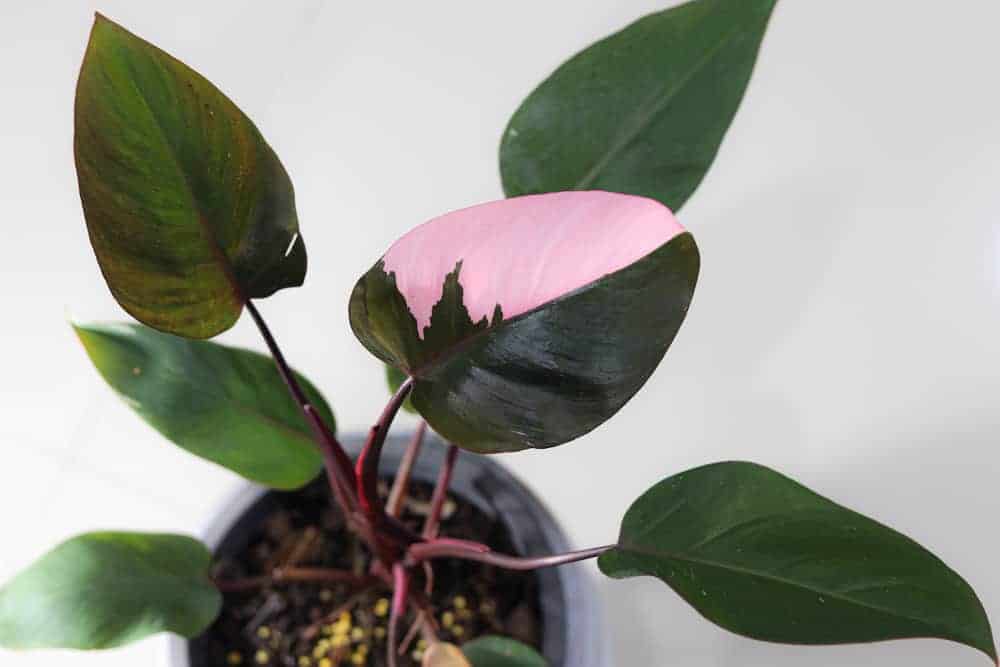
This is one of the most gorgeous and sought-after plants on the market and its features are similar to those of Rainbow Peperomia. For this reason, they will look stunning together. This Philodendron variety may be a rarity and difficult to acquire, but its beauty is well worth the effort.
Light Requirements
Pink Princess Philodendron should be set in a place that gets plenty of bright, but indirect sunlight.
Soil Requirements
Pink Princess Philodendron requires soil that is airy, well-draining and includes vermiculite.
Water Requirements
Pink Princess Philodendron should only be watered when the top two inches of its soil is dry. It should be watered in the soak and dry method.
Pros
- It is a unique-looking and beautiful plant
- Its light, soil, and water requirements are similar to Rainbow Peperomia
Cons
- It is difficult to find
- It is expensive
- It is susceptible to infestations of mealy bugs, spider mites, and scale insects
- It is susceptible to mosaic virus
- It is toxic
Split Leaf Philodendron
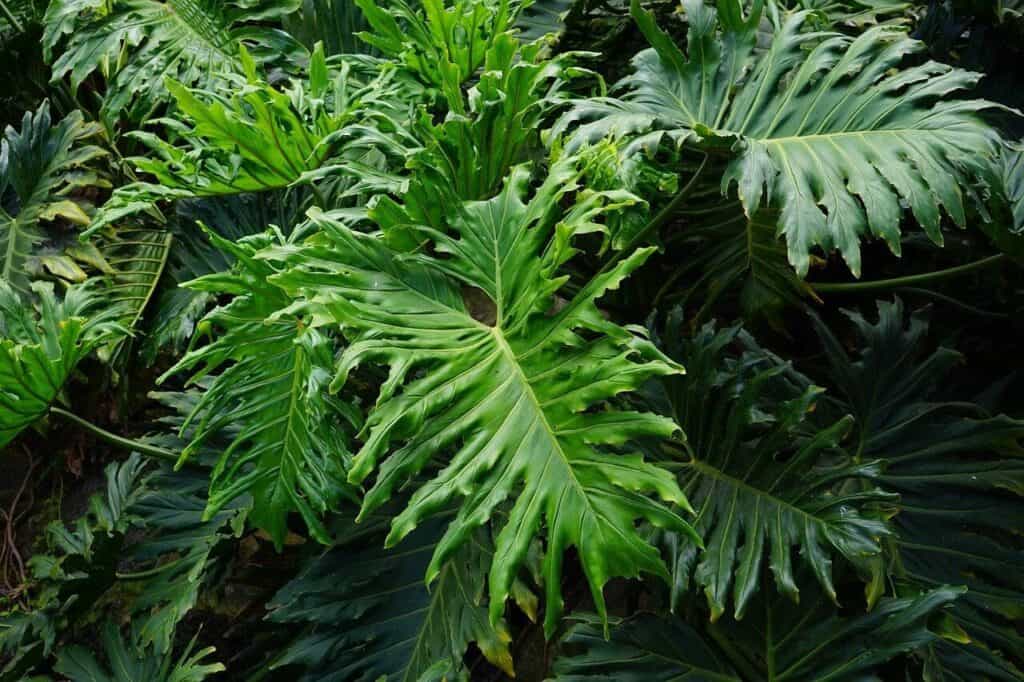
These consist of two Philodendron varieties, Philodendron Bipinnatifidum and Philodendron Selloum. They are both very pretty plants with large, green leaves that contain many splits in them.
Light Requirements
Philodendron Bipinnatifidum requires full sun while Philodendron Selloum requires bright but indirect sunlight.
Soil Requirements
Split Leaf Philodendron should be set in soil that is alkaline and is able to drain off excess water.
Water Requirements
Split Leaf Philodendron should be watered in the soak and dry method when the top two inches of its soil is dry.
Pros
- The soil and water requirements of Split Leaf Philodendron are similar to those of Rainbow Peperomia
- Split Leaf Philodendron is relatively easy to care for
- Split Leaf Philodendron is beautiful
- Split Leaf Philodendron can purify indoor air
Cons
- Split Leaf Philodendron are susceptible to infestations of aphids, mealybugs, and scale insects
- Split Leaf Philodendron is toxic
Monstera Varieties
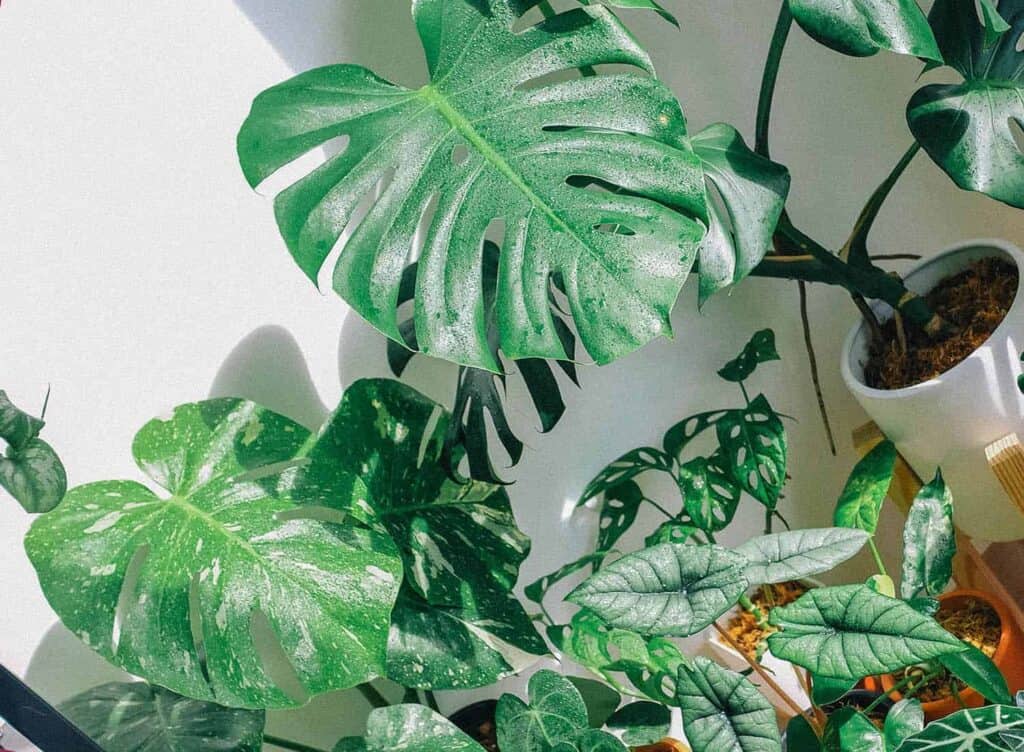
This family of plants is full of variety and beauty. Most of the plants included in this grouping grow large and luxuriously green leaves, some with variegation and some with slits. No matter what you are looking for in a plant, this family will probably have it.
Light Requirements
Most Monstera plant varieties require bright but indirect sunlight.
Soil Requirements
Monstera plants require acidic soil that can drain well.
Water Requirements
Monstera plants should only be watered when the top half of their soil is dry. If possible, they should be watered so that their leaves are not wetted.
Pros
- Monstera plant’s light, soil, and water requirements are similar to Rainbow Peperomia
- Monstera plants come in a wide variety of shapes and shades of green
Cons
- Monster plants are toxic
- Monster plants are susceptible to infestations of grasshoppers, mealybugs, and scale insects
Rainbow Peperomia Diseases and Common Problems
Here is a list of the most common issues faced by these plants. In this list is information on how to identify and treat each issue.
Mealybugs
Evidence of an infestation of mealybugs is small white spots that look like cotton on leaves and stems. To deal with an infestation of mealybugs, follow these steps:
- Spray a solution of alcohol and water on the leaves
- Rub the leaves with a cotton ball
- Coat the leaves in neem oil or insecticidal soap every few days
Root Rot
This is caused by overwatering a plant. If you learn how to properly water your plants, they should not get root rot. If, however, you are suspicious that your plant is suffering from this, look for these symptoms:
- Stems and leaves that are black
- Stems and leaves that are translucent
- Stems and leaves that are mushy
- Leaves that are dropping off regularly
A plant that is suffering from root rot should be allowed to dry out for a few days or weeks. There’s no need to water the plant during this time. Do trim off leaves and stems that are black, translucent, and mushy. If drying out the plant does not work, it may be best to replace the plant’s soil altogether.
Spider mites
Evidence of a spider mite infestation will show up as webbing on the leaves and stems. Sometimes the tiny insects will even be visible crawling around the plant. To treat this type of infestation, fill a spray bottle with a quart of warm water, 1 tsp. of dish soap, and 2 tsp. Of neem oil. Use this mixture to spray and wipe the leaves and stems of the plant clean. It may be necessary to repeat this process several times to rid the plant of all the insects.
Yellowing Leaves
Figuring out what is causing the leaves of a plant to turn yellow will be a process of elimination. It could be caused by any of the following:
- Excessive sunlight
- Too little or too much water
- Nitrogen deficiency
Rainbow Peperomia Treatments and Maintenance
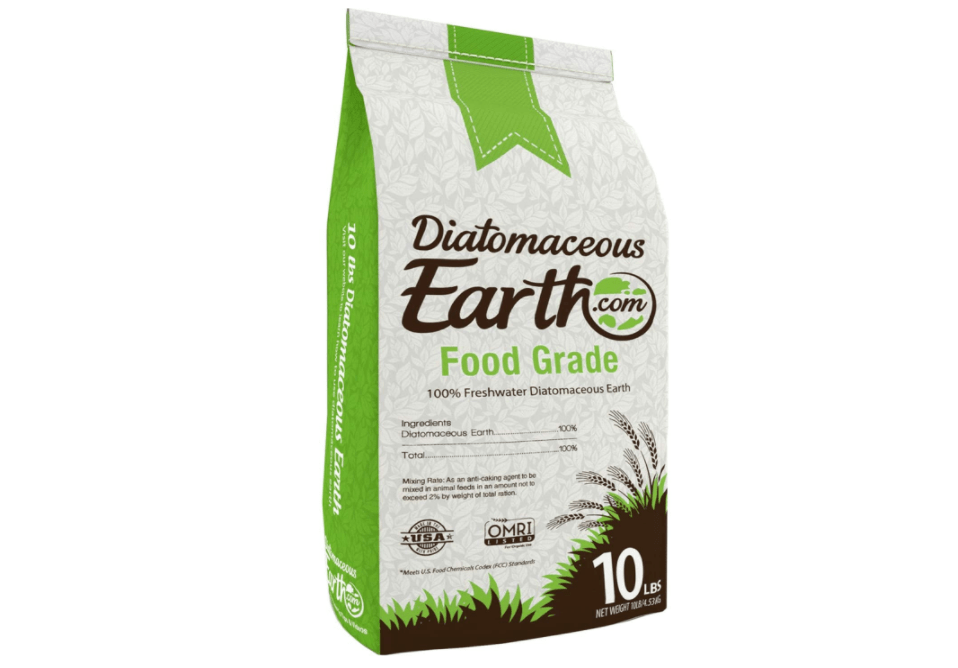
Since prevention is better than treatment, take some time to learn about what sort of diseases and pest infestations each of your plants faces. Then, learn how you can best treat and prevent those. Here are few tips to help keep your plants healthy and disease-free:
- Check it for signs of disease and infestations regularly, and treat them quickly.
- Clean the plant regularly with neem oil.
- Learn how to properly water and feed your plant.
- Make sure your plant is set in an area with adequate amounts of sunlight, heat, and humidity.
- Mix diatomaceous earth into the soil of potted plants.
Where to Buy Rainbow Peperomia Seeds Online
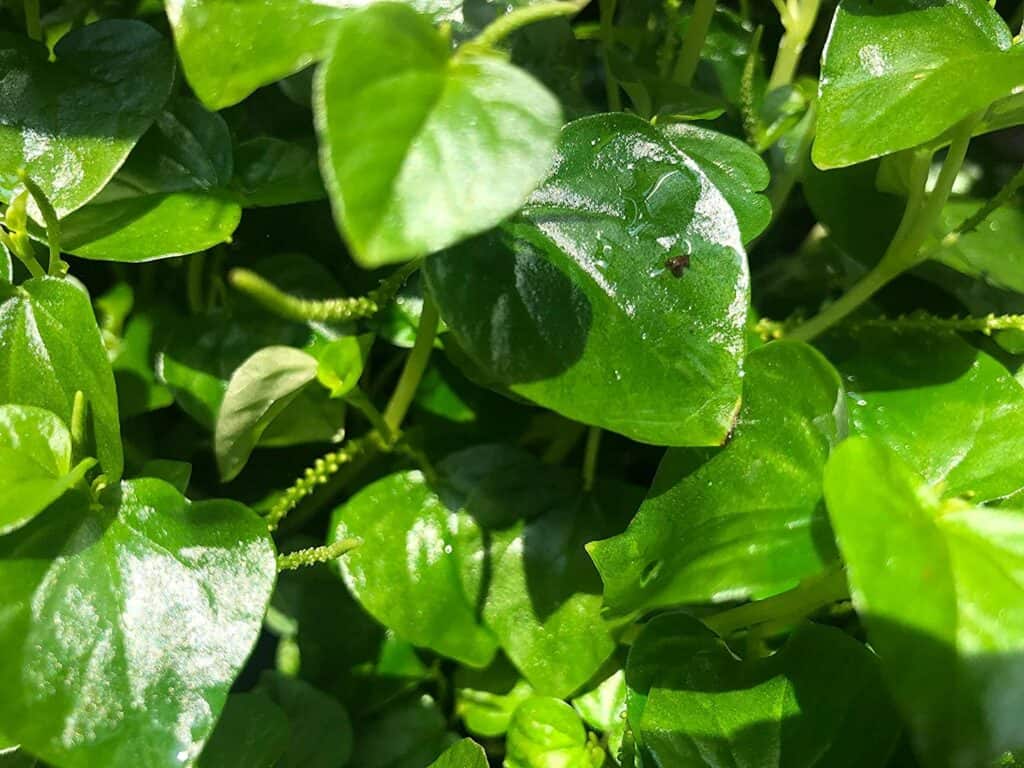
Since Peperomia seeds are difficult to find, it will require a little effort to search for them. If you are interested in purchasing these seeds, then start with these online shops:
FAQs
Question: Is Rainbow Peperomia Toxic?
Answer: No, this is not a toxic plant.
Question: How Large Will My Rainbow Peperomia Grow?
Answer: This variety will typically grow up to a foot tall and wide.
Question: Which USDA Hardiness Zone Can Rainbow Peperomia be Planted In?
Answer: This plant should only be set in a ground plot in zones 10 to 12. If you live in a zone with a lower number, you will need to transfer this plant indoors during the winter.
Where to Buy Mature Rainbow Peperomia Online
There are so many wonderful online gardening shops that it can be a little overwhelming to search for one of these popular plants. If you have decided to get a Rainbow Peperomia for your home or garden, then begin your online search at one of these shops:

